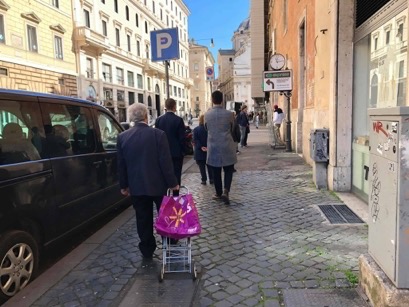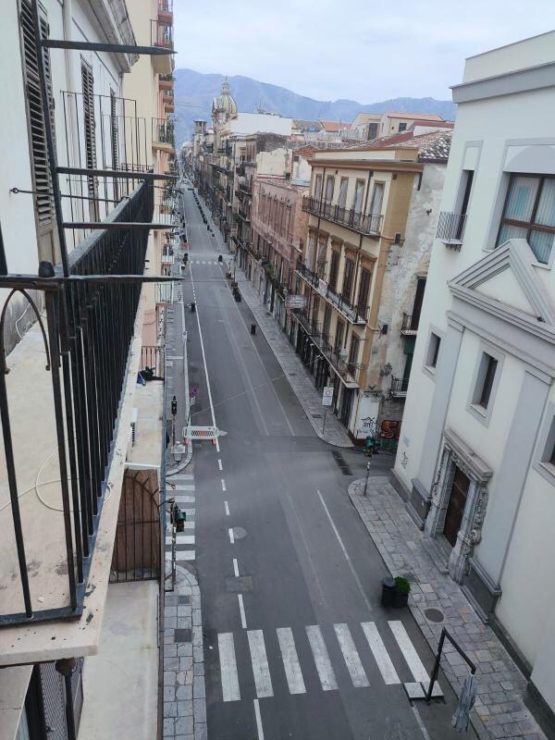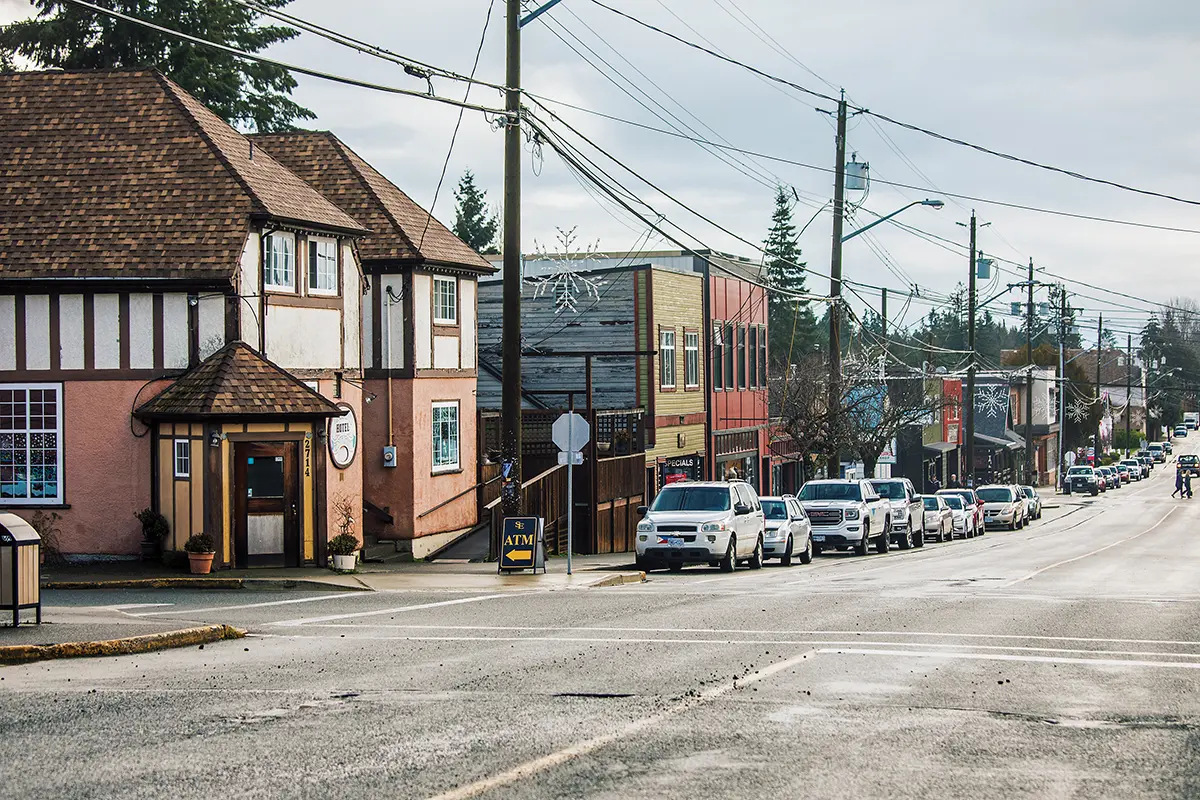
Serving as the European hotbed of the 2020 COVID-19 pandemic, Italy has become the object of intense global scrutiny and observation in recent weeks. The European nation went into an official nationwide lockdown on March 9, and since then, the country has been stuck in a frozen socioeconomic state.
Current data suggests that Canada is about a month ahead of the Italian scenario. We’re currently clocking in at around 6 300 confirmed cases at time of writing — Italy had a similar figure around March 7. As of March 29, nearly 100 000 Italians have been diagnosed with the virus.
Since the fight against COVID-19 has now become an international race against time, countries such as Canada are observing Italy — the nation that first surpassed China in total deaths — to a microscopic level of detail, to see if anything can be learned from them.
Italian life is being significantly disrupted at the hands of COVID-19, and what this fight looks like is shaping up differently across the country, just as it will in Canada.
A northern crisis
According to an interactive infection map from La Repubblica, Italy’s largest general newspaper, the region hardest hit by the virus had been Lombardy, where over 27 000 Italians have been infected by the virus.
Nora Zirilli, an Italian teenager living in Milan, Lombardy’s capital, says schools have been closed since February 24.
“The virus was incredibly underestimated,” she says.
When schools had just begun to shut down, young people were still leaving their homes for non-essential reasons. Some saw the closures as an opportunity to meet friends in public and private spaces alike, Nora notes.
Although the first reported cases of COVID-19 in Italy appeared in Rome, Lombardy’s role as Italy’s centre of international trade and commerce likely played a significant role in the spread of the virus within the region. For perspective, the city’s largest airport, Milano Malpensa, handled nearly 30 million passengers in 2019 and is an increasingly active hub for Chinese investment.
In Nora’s region, police cars drive through densely-populated areas with public service announcements, going through the same streets several times a week. Loudspeakers blare “Si invita e si consiglia la cittadinanza a rimanere a casa,” meaning “Citizens are invited and advised to remain at home.”
Police have since taken stricter measures in and around Milan, with more patrols and tight authorization checkpoints around town. Nora says that since then, Milanese have become much more compliant with government orders.

Sharon Piccardo is another student currently enrolled in liceo, the Italian equivalent of late secondary school. She lives in a small town near Genoa, in Liguria, a region best known for its picturesque Cinque Terre towns and languid seaside views. The region officially began quarantining itself when Prime Minister Giuseppe Conte announced the nationwide lockdown starting March 9, after “red zone” quarantine regions in various northern provinces had already been implemented in late February.
Sharon’s mother, Deborah, holds a managerial position at a local supermarket in Savona, Liguria.
“At the beginning, we didn’t have the permission to wear masks … because [it] would have scared people,” Deborah said of her workplace when the pandemic first began. The supermarket she works at only started permitting employees to wear masks during shifts several days ago.
Deborah also says she hasn’t been to visit her elderly mother in about a month. She worries that she could be carrying the virus asymptomatically and bringing it back home because she works in one of the few public spaces — grocery stores — still open to the general populace because they were deemed as essential services.
She does note that the amount of frenzied panic-buying has gone down since early March, but is still concerned for the health and safety of loved ones.
Liguria has the eldest demographics of any region in Italy; its residents are, on average, 49 years old. With coronavirus posing a particular threat for immunocompromised and elderly people, the Piccardo family worries the situation will soon surpass Lombardy’s in severity.
“A lot of people in northern Italy, in general, have [vacation] houses here,” Sharon says, and so travel from other regions to Liguria is common.
Sharon speculates this has contributed to the spread of coronavirus, particularly within her hometown of Savona. As of March 29, the small town of just over 60 000 inhabitants logged 239 cases — a substantial amount considering the area is relatively untouched by tourism and remote.
Many Italians were also seen trying to escape areas mandated under the “red zone” before the official quarantine came into effect on February 27. Videos of crowded train stations and airports, which contradicted government orders for social distancing, were found on social media. Many of these travellers were likely Italians returning to their native regions, given that many Italians from the centre and the south find work in the economic hub surrounding Milan and return home frequently for holidays or breaks.
Student Lorenzo Bianchi had to leave the University of Pavia for his hometown in late February. Lorenzo was forced to move back to Brescia when his university set notice for a complete campus shutdown several weeks ago. As with many institutions worldwide, his classes have been moved online.
Coronavirus has hit Brescia, among all other provinces in Italy, with disproportionate severity. On March 17, it broke the record for the highest number of coronavirus deaths registered in a single day — not only in Italy, but in the entire world. As of March 29, Brescia trailed behind Milan and Bergamo as the third-largest centre of confirmed cases in all of Italy — 8 013 cases in total.
Lorenzo anticipates that small businesses and venues will suffer the most damage from the economic impact of the COVID-19 lockdown.
A musician himself, Lorenzo also says that all public events — including soccer matches, large-scale concerts, community gatherings, and personally, music gigs for his band, Apnea — have been cancelled for the foreseeable future.
“They don’t manage to get [back] up,” he says, the way corporations and larger companies do.
With small businesses in Italy generating 67 per cent of the non-financial sector, the risk of greater economic implications for the country grows greater each day.
Lorenzo’s mother Ada, a primary school teacher, has been finding the transition to online teaching challenging. Lorenzo explains that for upper-level students like himself, online school is easier to navigate. His mother has found online lessons do not work well with elementary-aged children, since much of the educational content at the age level is based on interpersonal and interactive learning.
Students across Italy are due to return back to classrooms on April 5.
“We all believe that won’t happen,” says Sharon, a sentiment shared strongly by Lorenzo and Nora.
Emergent concerns from central and southern Italy

As an American working abroad in Rome, Gianna Succi witnessed the situation’s progression from the nation’s capital in early March. The national lockdown began on March 9, and came as an abrupt shock to her and other Romans who had heard of the quarantine being implemented in northern regions several weeks prior.
“The day before was normal, everyone was going about their business. On [March 10] it became a ghost town here,” she says.
The official quarantine was initially intended to last until March 25, but is now set to continue indefinitely.
“No one thought Rome would be affected,” Gianna says.
Since “Rome is chaotic to begin with,” she says Italians believed any additional chaos wouldn’t be much of a change.
But the escalation of government decrees for a nationwide lockdown made no exception for the heavily-toured capital, and life in Rome came to a sudden halt.
While the vast majority of commercial and retail stores have shuttered, public services and industrial production across the nation continue. Particularly in Rome, a city known for its gastronomy, some restaurants and bars responded by providing “consegna a domicilio” — delivery services — while others chose to close completely.

Further south on the island of Sicily, the port city of Palermo comes in third in the region for confirmed cases of coronavirus. As of March 29, over 1 400 Sicilians have contracted the disease and 65 have died.
Laura Richichi and Diego Boatta are native palermitani, born and raised in the city.
“You can basically describe the city [of Palermo] as a ghost town,” says Laura.
All across Italy, the mandatory “autodichiarazione” form has been implemented. This is a mandatory form for self-declaration of the four permissible reasons listed for leaving homes: proven work needs, situations of absolute necessity, health reasons, and return [trips] to your residence. Only paper copies are accepted by police, and enforcement is strict.
Diego stresses the severity of penalties associated with leaving home without permission.
“It’s a real crime,” he notes, with penalty fines amounting to around €260 (about $404 Canadian) or more.
Another factor that may impact the regional outcome of COVID-19 is the financial preparedness of the south, due to historically-rooted economic disparity dating back centuries.
Laura says that “the south would be the first one to go down,” says Laura, if the coronavirus were to grip the area as hard as it did the north because of its weaker healthcare infrastructure.
Northern regions are also generally much wealthier, and many Italian celebrities who are raising money and donating to support efforts against the virus — including singers Fedez and Chiara Ferragni — are native to said regions. The southern regions have comparatively fewer high-profile individuals and are being left to deal with the financial consequences on their own.
The financial stress of COVID-19 is also personal for Diego’s family. His parents are self-employed tattoo artists who own Box 2 Tat2 Studio, the oldest tattoo shop in Palermo.
Non-essential services have been asked to close, and without a “work from home” option for skilled tradespeople such as Diego’s parents, they will have to make up for lost time after coronavirus ends to make ends meet.
From Gianna’s perspective, she believes the Italian government is taking the appropriate measures to address the coronavirus pandemic, and helping its citizens as much as it can.
For now, the attitude toward government measures against coronavirus in Italy is decidedly mixed, and may remain that way until pandemic either improves or worsens in the country.
An uphill battle for the Italian healthcare system
Among other challenges, Italy is struggling with the sheer volume of critical COVID-19 cases that need intensive care. In a paper for the New England Journal of Medicine, Dr. Lisa Rosenbaum writes that “there simply [are] not enough ventilators for all patients who need them” in Lombardy.
Italy also faces significant regional disparity in healthcare provisions, associated with the economic disparities between its north and south. Higher average life expectancies are clustered in the northern regions, particularly in Trentino, Veneto, and Lombardy — among the wealthiest Italian regions. The life expectancy estimates hover around 83 to 84 years old. Southern regions have historically less robust economies, and lower life expectancies. For instance, the lowest Italian life expectancy rate of roughly 82 is found in the southern region of Campania, where Naples and the Amalfi Coast can be found.
This regional “health gap” complexifies when healthcare expenditure is broken down. Lombardy takes the undisputed lead, allotting nearly €20 million in healthcare spending for 2018, with the five next regions spending roughly half that amount. Spending disparity isn’t so clear-cut between the north and south. Located far down the boot of Italy, Campania spends roughly as much as the northern region of Veneto does.
Italy is already facing a breaking point with its ability to accomodate coronavirus patients at hospitals. With 12.5 beds per 100 000 citizens, Italian hospitals are already near the top among European nations for its bed-to-citizen ratio. But the number of patients who need intensive care units (ICUs) and respiratory intensive care units (RICUs) is already vastly outnumbering the amount available — particularly as the number of infected Italians is increasing at a rate of 5.4 per cent daily.
How Canada compares to Italy in the battle against COVID-19
In the week leading up to March 29, Canadian figures for total COVID-19 cases went from 1 470 to over 6 300 — an increase of 329 per cent. Italy’s increase during the same period sits at 56 per cent, but its raw numbers are much higher. The number of cases increased from almost 64 000 to over 97 000 over the same period, given it is a much later stage of progression on the infection’s “curve.”
The Canadian case does have some advantages over the Italian one, however. The nation’s demographic makeup is markedly younger than the aging European nation, with about 83 per cent of Canadians below 64 years old and 17 per cent who are 65 or older. This compares to the Italian demographic case, where those statistics sit at roughly 77 per cent and 23 per cent respectively.
The OECD’s Better Life Index ranks the Canadian healthcare system at a 9.6, compared to the Italian score of 8.3. On other “quality of life” metrics such as community, education, income, and housing, conditions point to a Canadian advantage. These measures impact how efficiently a nation battles with the pandemic in the long run, and how well it can bounce back as economies grind to a near-halt for the time being.
The question that remains to be answered is if Canada is ready to shift into “freeze mode” — a state of complete, nationwide quarantine — soon enough to avoid reaching the peak of the coronavirus curve.
For now, Canada has taken mostly provincial or territorial measures to slow the spread of COVID-19, with some regions such as Metro Vancouver closing all dine-in restaurant service and provinces like Quebec being the first to close all schools as a precautionary measure. The federal government has also been taking increasingly aggressive measures. On March 21, federal health minister Patty Hadju cautioned that if people continued to violate the government’s recommended measures, Canadians’ “civil liberties [would be put] in jeopardy,” meaning restrictions as tight as a national lockdown could soon be on the horizon.
The following weeks will prove decisive in testing Canada’s preparedness for a full-scale pandemic, and determine whether Canadians’ quarantine experiences will soon resemble those of the Italians. If the Canadian battle against COVID-19 is truly several weeks ahead of the timeline of Italy, it is likely that Canada and nations on the same trajectory will soon face scrutiny under the international microscope for how it handles the weeks and months to come.








